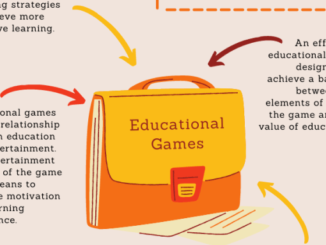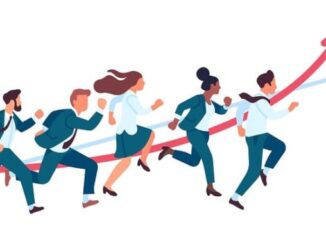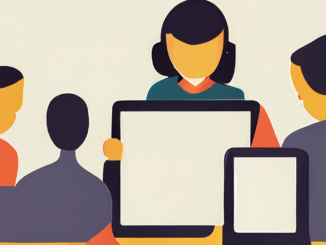
Ludogogy has entered into an agreement with Gamification Journal, based in Seoul, South Korea, for the mutual exchange of articles. This is the thirteenth of those articles we are publishing and it was in exchange for David Monreal Becerra’s article on unlearning what play should be.
Prologue
Why did Steve Jobs say that he would trade all of his technology for an afternoon with Socrates? Also, in presenting the i-Pad and iPhone4, what was his real intention about his comment, “In Apple’s DNA, it’s technology married with liberal arts.” Although he was famous for laying down the law to employees, what’s the real meaning of liberal arts to him?
After the announcement of the Fourth Industrial Revolution by Klaus Schwab at the Davos Forum in 2016, there has been new-normal chaos, mixed with the game between AlphaGo and Lee Sedol, COVID-19, and the wave of liberal arts, making our predictions for the future more blurry. In the world, many countries which have suffered economic downturns started shutting down because of the COVID-19 pandemic, but Korean entertainment phenomena such as K-Pop or professional e-sports games have seen growth. Why is that?
This article aims to review the reasoning in many fundamental areas of human life, which has led to the foundation of the ‘liberal arts’, and to figure out why, following the release of the personal computer during the ‘information revolution’, games have been increasingly applied in many areas, beyond simple play, including economics, business, human resources and administration.
This will be expected to contribute to gamification literacy in the fourth industrial revolution following COVID-19, which should narrow the generational discrepancies in detail and increase the mass understanding of gamification as a potential future catalyst of change.
Disintegrating life
Until the agricultural revolution, work, learning, and play were united in human life. Fathers and sons hunted outside the cave to get food, to learn the method, and play with some fun and tension.
In agricultural societies, people sang a song of labor when working and learning. This period was one which combined work, learning, play, and self-sustaining clothes, food, and shelter.
Men were able to harvest and manage all the agricultural matters, and women were also able to make clothes and food. At that period, producers and consumers were the same. In this labor-centric era, there were many children who were more diligent or lazier. But they still stayed in the house without being kicked out. There wasn’t a separation between employment and unemployment.
The industrial revolution and the advent of machines changed every lifestyle. The highest value sought in industrial society was commodification to create mass consumption for mass production. Rapid industrialization and urbanization focused the population on factories and schools. The 3S principles – Simplification, Standardization, and Specialization fully led to the Scale of the Economy. Productivity enhancement, including Taylorism, Fordism, Time Study, and Motion Study naturally excluded the area of play. Afterwards, recreation became just a sub-sector or sub-concept for production.
So, through the process of productivity increase by mass production during the industrial era, life was just divided into work and learning. And, learning was a tool to work, and work was labor which people did not to want to do. The play was missing. After missing the play and dividing into production/consumption and employment/unemployment, the natural environment was damaged. The value of existence for human beings was collapsed. An unknown mass population was deprived of each identity, and the endless division of labor was not just a loss of value but a loss of life. We killed as we divided.
Recently, the reason why extreme selfishness and anti-humanity harm have been spread out has been related to these changes. On the opposite side, liberal arts started emerging slowly.
Towards the Archetype
Following the Asian financial crisis at the end of 90’s, why hasn’t the unemployment rate improved? The opportunities for full-time jobs have decreased, but the gig economy has been more popular. The wage gap between full-time and part-time jobs has been higher, so it has revealed some fairness issues and social conflicts in Korea. Also, in the economic downturn, the agenda about basic income and flexible working has been continuously discussed. Misunderstandings around how the sharing economy works e.g. Uber or Airbnb, have gradually disappeared.
What’s the meaning of these changes? And where will they end? The meaning emerges from the Archetype, an attempt to recover the value of life before the industrial revolution. The global population (about 8 billion) cannot accommodate hunting or agricultural life in 8 thousand or 0.8 billion population. However, during the COVID-19 pandemic over two years, the sky with 1% of normal flights looked like the autumn weather in the year 1960~1970. Despite the forced stop, the contemplation based on social distance reminds us of the missing memory and value.
I am glad that there is still a generation with the memory of agricultural society. In vague memory, there are still values like neighborhood, relationships, sharing, and thoughtful consideration. This memory disappeared by the division of labor and decomposition through the industrial society, so it’s a missing piece.
In the latter part of industrial society, integration, convergence, and consilience are technically possible. It’s a network effect. Like social work and village community, there seems to be social cohesion. Relationship recovery is linked to sharing and thoughtful consideration. Sympathy, sharing, and fairness are frequently discussed. In addition, the appearance of prosumers which weakens the separation between production and consumption, and the gig economy mixing employment and unemployment have proliferated. Despite the earlier appearance of COVID-19, remote work and learning concentrate on one place – home. During this, play becomes gamification.
Likewise, organizing the network is recovered, and efforts to recover the identity of specialized individuals from many unknown people are increasing. Recent relevant books cover this kind of demassification. An analog lifestyle can be transformed into a digital one. Artificial intelligence, robot, and big data technology in the fourth industrial revolution can process more than if work depended on human memory and hand. If the fifth and sixth industrial revolutions will be expected in the future, a lifestyle system with 10 billion population may be returned to that with 0.1 billion population. The problem is whether the original value of life, order, thoughtful consideration, and caring will be recovered. Apparently, there is a hope of a liberal arts rennaisance in our current chaotic real life.
The GDP per capita of Korea was over USD 30,000 a few years ago. As Easterlin’s Paradox indicates, it’s still early for us to share meaningful empathy with neighborhoods. However, as Northern European countries show, there are still big gaps among countries and continents. Finally, the possibility of recovering towards the archetype by sharing social value is effected by a small starting wave of liberal arts.
Through the second and third industrial revolutions, worklife gradually changed to include occupation, employment, and starting a business. The evolution and implementation of concepts such as learning being variously, life-long, remote, self-driven, and virtual become clearer because of the social shock of COVID-19 and the fourth industrial revolution. It’s a recovering force towards the archetype. Surely, that archetype means a well-mixed life with work, learning, and play. This is why gamification is necessary.

Epilogue
A middle school student (Age 15, third grade) and a retired professor (Age 67) took a gamified hiring assessment. created by Benchmark.games (Hungary) and published in the Korean market. This gamified solution is to assess the qualification of a potential organization member regarding leadership, motivation, communication, conflict management, etc. The result was that a middle school student who didn’t understand any company business, did better than the professor, who had 20 years of business experience and 20 years of marketing lecturing in every assessment field. For sure, the manual in this assessment mentions that the score is not important, but there is that must be reflected on considering the current period of digital transformation we are experiencing.
Gamification includes the transformational process into a game, or procedural meaning. As mentioned before, society after the fourth industrial revolution seeks the recovery towards the archetype. Highly civilized development and rapidly increasing population cannot reproduce the past life in agricultural or primitive societies. However, our way of life seeks concurrent value. For adequately mixing work and learning in this process, including play as a catalyst is critical.
Regarding what the result of the gamified test between the young student and old professor means, that inclusive point is coincidentally the diverging point between analog and digital. This is the colliding point between the addictive young generation and the old-fashioned parents’ generation. Artificial intelligence, robot, and big data technology will be expected to exceed human artistry and creativity. However, in the strong artificial intelligence era, humanism as human’s unique characteristics has a priority. Gamification already has been spread out in economics, business, administration, the education sector, etc. As a part of life, the value and status of play has been recovered through gamification. To make gamification a justified recovering force towards the archetype, the value of liberal arts focusing on human value is important. Probably, I think that this is why Steve Jobs missed Socrates.
- Gamification – A Recovering Force Towards the Archetype - 17th January 2023





Be the first to comment